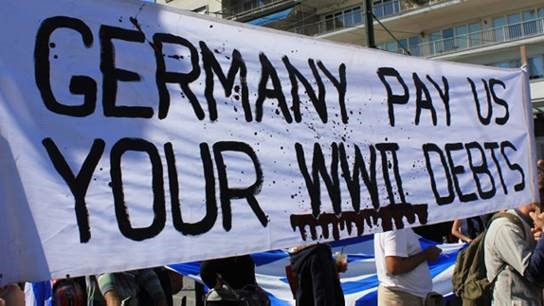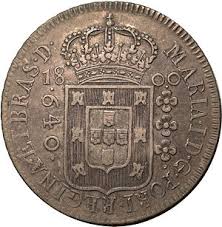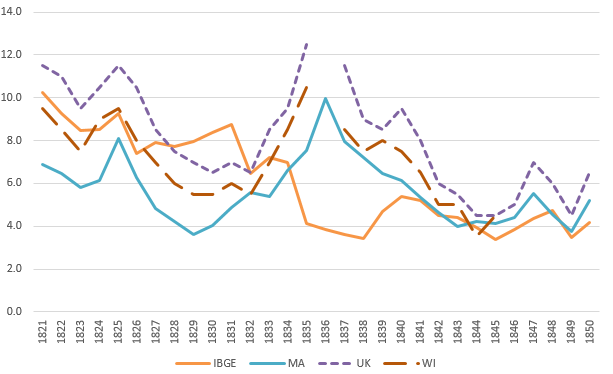The Economic Consequences of the 1953 London Debt Agreement
By Gregori Galofré-Vilà (Oxford), Martin McKee (London School of Hygiene and Tropical Medicine), Chris Meissner (UC Davis) and David Stuckler (Oxford)
Abstract: In 1953 the Western Allied powers implemented a radical debt-relief plan that would, in due course, eliminate half of West Germany’s external debt and create a series of favourable debt repayment conditions. The London Debt Agreement (LDA) correlated with West Germany experiencing the highest rate of economic growth recorded in Europe in the 1950s and 1960s. In this paper we examine the economic consequences of this historical episode. We use new data compiled from the monthly reports of the Deutsche Bundesbank from 1948 to the 1960s. These reports not only provide detailed statistics of the German finances, but also a narrative on the evolution of the German economy on a monthly basis. These sources also contain special issues on the LDA, highlighting contemporaries’ interest in the state of German public finances and public opinion on the debt negotiation. We find evidence that debt relief in the LDA spurred economic growth in three main ways: creating fiscal space for public investment; lowering costs of borrowing; and stabilising inflation. Using difference-in-differences regression models comparing pre- and post LDA years, we find that the LDA was associated with a substantial rise in real per capita social expenditure, in health, education, housing, and economic development, this rise being significantly over and above changes in other types of spending that include military expenditure. We further observe that benchmark yields on long-term debt, an indication of default risk, dropped substantially in West Germany when LDA negotiations began in 1951 and then stabilised at historically low rates after the LDA was ratified. The LDA coincided with new foreign borrowing and investment, which in turn helped promote economic growth. Finally, the German currency, the deutschmark, introduced in 1948, had been highly volatile until 1953, after which time we find it largely stabilised.
URL: http://EconPapers.repec.org/RePEc:nbr:nberwo:22557
Distributed by NEP-HIS on 2016-09-04
Review by Natacha Postel-Vinay (LSE)
The question of debt forgiveness is one that has drawn increased attention in recent years. Some have contended that the semi-permanent restructuring of Greece’s debt has been counterproductive and that what Greece needs is at least a partial cancellation of its debt. This, it is argued, would allow both faster growth and a higher likelihood of any remaining debt repayment. Any insistence on the part of creditors for Greece to pay back the full amount through austerity measures would be self-defeating.
One problem with this view is that we know very little about whether debt forgiveness can lead to faster growth. Reinhart and Trebesch (2016) test this assumption for 45 countries between 1920-1939 and 1978-2010, and do find a positive relationship. However they leave aside a particularly striking case: that of Germany in the 1950s, which benefited from one of the most generous write-offs in history while experiencing “miracle” growth of about 8% in subsequent years. This case has attracted much attention recently given German leaders’ own insistence on Greek debt repayments (see in particular Ritschl, 2011; 2012; Guinnane, 2015).
Eichengreen and Ritschl (2009), rejecting several popular theories of the German miracle, such as a reallocation of labour from agriculture to industry or the weakening of labour market rigidities, already hypothesized that such debt relief may have been an important factor in Germany’s super-fast and sustained post-war growth. Using new data from the monthly reports of the Deutsche Bundesbank from 1948 to the 1960s, Gregori Galofré-Vilà, Martin McKee, Chris Meissner and David Stuckler (2016) attempt to formally test this assumption, and are quite successful in doing so.
By the end of WWII Germany had accumulated debt to Europe worth nearly 40% of its 1938 GDP, a substantial amount of which consisted in reparation relics from WWI. Some already argued at the time that these reparations and creditors’ stubbornness had plagued the German economy, which in the early 1930s felt constrained to implement harsh austerity measures, thus contributing to the rise of the National Socialists to power. It was partly to avoid a repeat of these events that the US designed the Marshall Plan to help the economic reconstruction of Europe post-WWII.

Marshall aid to Europe between 1948 and 1951 was less substantial than is commonly thought, but it came with strings attached which may have indirectly contributed to German growth. In particular, one of the conditions France and the UK had to fulfil in order to become recipients of Marshall aid was acceptance that Germany would not pay back any of its debt until it reimbursed its own Marshall aid. Currency reform in 1948 and the setting up of the European Payments Union facilitated this process.
Then came the London Debt Agreement, in 1953, which stipulated generous conditions for the repayment of half the amount due from Germany. Notably, it completely froze the other half, or at least until reunification, which parties to the agreement expected would take decades to occur. There was no conference in 1990 to settle the remainder.

Galofré-Vilà et al. admit not being able to directly test the hypothesis that German debt relief led to faster growth. Instead, making use of simple graphs, they look at how the 1953 London Debt Agreement (LDA) led to lower borrowing costs and lower inflation, which comes out as obvious and quite sustained on both charts.
Perhaps more importantly, they measure the extent to which the LDA freed up space for social welfare investment. For this, they make use of the fact that Marshall aid had mainly been used for infrastructure building, so that the big difference with the LDA in terms of state expenditure should have been in terms of health, education, “economic development,” and housing. Then they compare the amount of spending on these four heads to spending in ten other categories before 1953, and check whether this difference gets any larger after the LDA. Perhaps unsurprisingly, it does, and significantly so.
This way of testing the hypothesis that the LDA helped the German economy may strike some as too indirect and therefore insufficient. This is without mentioning possible minor criticisms such as the fact that housing expenditure is included in the treatment, not control group (despite the 1950 Housing Act), or that the LDA is chosen as the key event despite the importance of the Marshall Plan’s early debt relief measures.
Nevertheless testing such a hypothesis is necessarily a very difficult task, and Galofré-Vilà et al.’s empirical design can be considered quite creative. They are of course aware that this cannot be the end of the story, and they are careful to caution readers against hasty extrapolations from the post-war German case to the current Spanish or Greek situation. Some of their arguments have somewhat unclear implications (for instance, that Germany at the time represented 15% of the Western population at the time, whereas the Greek population represents only 2%).

Perhaps a stronger argument would be that Germany’s post-war debt was of a different character than Greek’s current debt: some would even call it “excusable” because it was mainly war debt; it was not (at least arguably) a result of past spending excesses. For this reason, one may at least ask whether debt forgiveness in the Greek context would have the same — almost non-existent — moral hazard effects as in the German case. Interestingly, the authors point out that German debt repayment after the LDA was linked to Germany’s economic growth and exports (so that the debt service/export revenue ratio could not exceed 3%). This sort of conditionality is strangely somewhat of a rarity among today’s sovereign debt contracts. It could be seen as a possible solution to fears of moral hazard, thereby mitigating any differences in efficiency of debt relief emanating from differences in the nature of the debt contracted.
References
Eichengreen, B., & Ritschl, A. (2009). Understanding West German economic growth in the 1950s. Cliometrica, 3(3), 191-219.
Guinnane, T. W. (2015). Financial vergangenheitsbewältigung: the 1953 London debt agreement. Yale University Economic Growth Center Discussion Paper, (880).
Reinhart, C. M., & Trebesch, C. (2014). A distant mirror of debt, default, and relief (No. w20577). National Bureau of Economic Research.
Ritschl, A. (2011). “Germany owes Greece a debt.” in The Guardian. Tuesday 21 June 2011.
Ritschl, A. (2012). “Germany, Greece and the Marshall Plan.” In The Economist. Friday 15 June.














